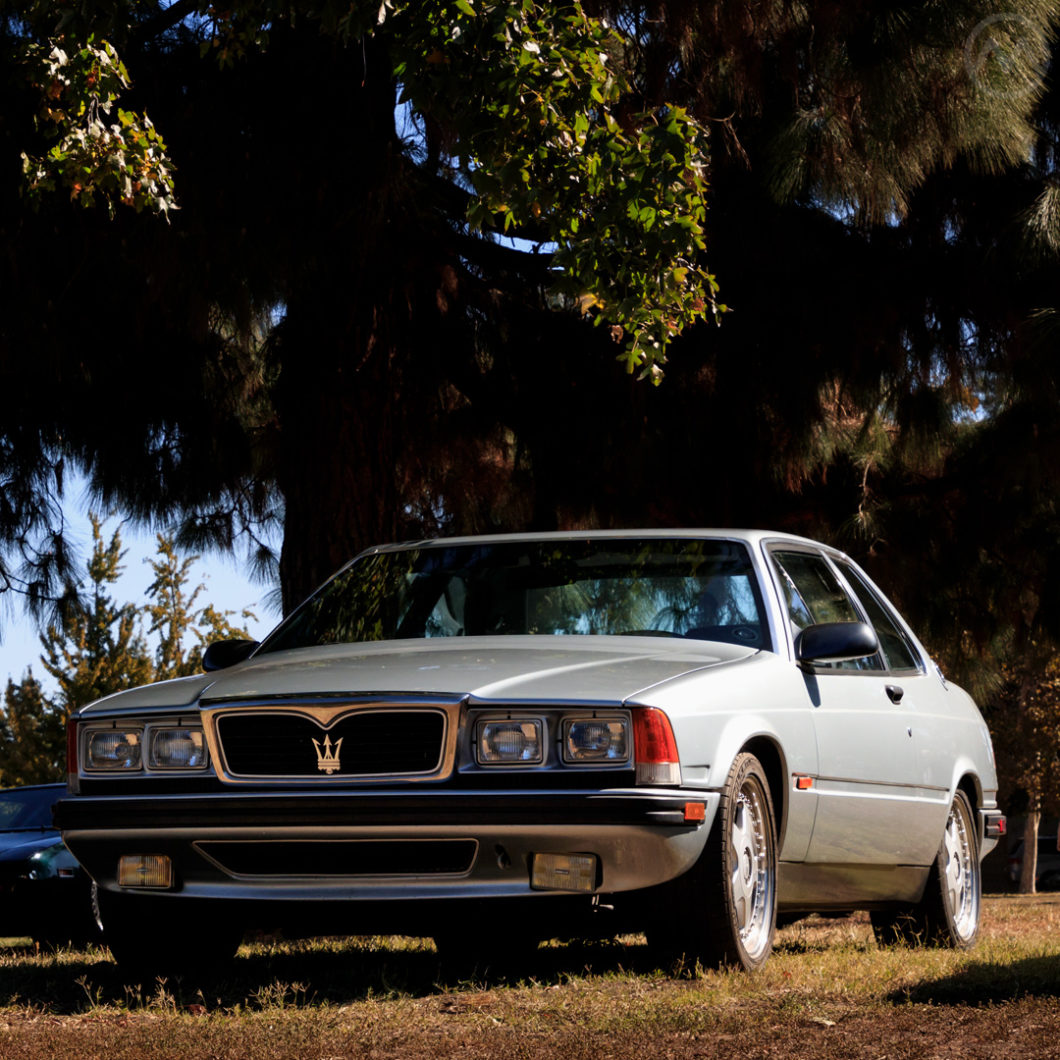It looks like a Maserati BiTurbo coupe and in a sense it is – but it’s not like other BiTurbos. It’s a Maserati 228 – also known as Tipo AM334. Until the 1990s and the Shamal, it was the ne plus ultra of BiTurbos – a larger, more refined variant aimed at the BMW 6-series, Jaguar XJ-S, and other GTs above the regular BiTurbo’s market range.
First shown in 1984, the 228 also benefited from the many refinements made to the sometimes troubled BiTurbo platform from 1982 until 228 production began in 1986. But the Maserati 228 story starts, arguably, in 1976.
Alejandro de Tomaso to the Rescue
In the summer of 1975, Alejandro de Tomaso, who’d made an offer on the company once before, stepped in to rescue Maserati following Citroën’s economic near death experience and a rapid decline in sales after the oil crisis. Only 201 Maseratis were made in 1975 and things looked bleak indeed.
Italian authorities stepped in to prevent liquidation but survival depended on de Tomaso and GEPI – Società per le Gestioni e Partecipazioni Industriali. GEPI was a holding company created in 1971 to provide bridge financing and restructuring and hopefully save jobs, and in 1975, Italy was in a sharp recession.
Aside from greatly expanding his own company (with some help from his wife and fellow racer Isabelle Haskell), he’d revived motorcycle makers Benelli and Moto Guzzi under similar circumstances. Like Obi-Wan Kenobi, he was Maserati’s only hope.
While GEPI bought most of the company, it was de Tomaso who’d run it. Months later, he and GEPI stepped in for another troubled Italian concern, Innocenti, which would later provide Maserati with certain manufacturing services.
”When we came in, there was nothing new,” de Tomaso later said. “The only thing we had was a tradition, and that was not enough.”
One of de Tomaso’s first steps at Maserati was to create two new cars. The first was the De Tomaso Longchamp-derived Kyalami coupe (a successor to the Mexico) and the second, the Quattroporte III. The Kyalami went wanting for buyers (just 200 were sold from 1976-83) but the QIII was a success.
Genesis of the BiTurbo
The QIII provided crucial income in the late 1970s, but De Tomaso’s ambition was to mass produce – thus he embarked on the BiTurbo – designed under new chief engineer Aurelio Bertocchi and penned by Fiat and Pininfarina alum Pierangelo Andreani.
It was the first twin-turbo production car in the world and a bona fide hit. Aimed at the higher-end BMW E21s in size and scope, it was more expensive than the BMWs and faster, but unlike any past Maserati, within reach of ordinary buyers.
Compared to the 1975 nadir, Maserati sold more than 4,500 cars in 1984 – a number larger than several classic Maserati models combined. The car had debuted in 1981 in Europe, but didn’t come stateside until the fall of 1983.
Early adopters paid a high price – because few cars have had as many teething issues as the carbureted BiTurbos, which were quite fast for the time but prone to fits of pique and often fragile. It took about half a decade and fuel injection to get the recipe relatively close to right – and competing cars often had no such troubles.
In the U.S., the range kept changing as Maserati pulled models, then replaced them, then made technological changes to the cars – and sales shrank as the eighties went on.
The Maserati 228
While the Kyalami wasn’t a success, Maserati didn’t want to abandon the market between the Quattroporte and the BiTurbo. In 1983 work began on the 228; an enlarged, improved car based on the BiTurbo, which was the only cost effective way to create it.
A proper 5-seater, the Maserati 228 rode the 4-door BiTurbo wheelbase and was longer and wider and slightly taller than the regular BiTurbo coupe. It used only the largest engine – an injected, 2.8L, 250hp V6 and had many electronic updates to suit. Andreani softened the lines to differentiate it and it shared no panels with the other BiTurbos, although the family resemblance was very clear.
Inside it had the typical rich interior – smooth leather and alcantara, burled elm, and the trademark (largely unreadable at speed) Maserati clock in the center of the dash.
By 1987 the BiTurbo’s reputation was not helping sales, particularly in North America. The line by the end of 1988, a year when very few cars were actually shipped, was reduced to the BiTurbo Spyder, 228, and the revised 430 sedan. The 228 had been available in Europe for almost two years by then.
Nevertheless, the 228 outpaced the Kyalami, with 469 sold in 7 years. This 1989 228 was sold new in Canada, only coming stateside in 2018 and the OZ Racing Ghibli Cup wheels telegraph a secret – this one has the 24V heart of a 1994 Ghibli in place of the original 18V 2.8.
Because of its higher market position and the technical refinements made to the platform by the time of its introduction, it was a much more robust car than the BiTurbo Coupes that preceded it.
Lack of funds for a completely new car meant a thorough revision of the BiTurbos in the early 1990s, at which point the 228 was replaced by the revived Ghibli. By then Maserati had abandoned the U.S. market, not to return until 2002.

